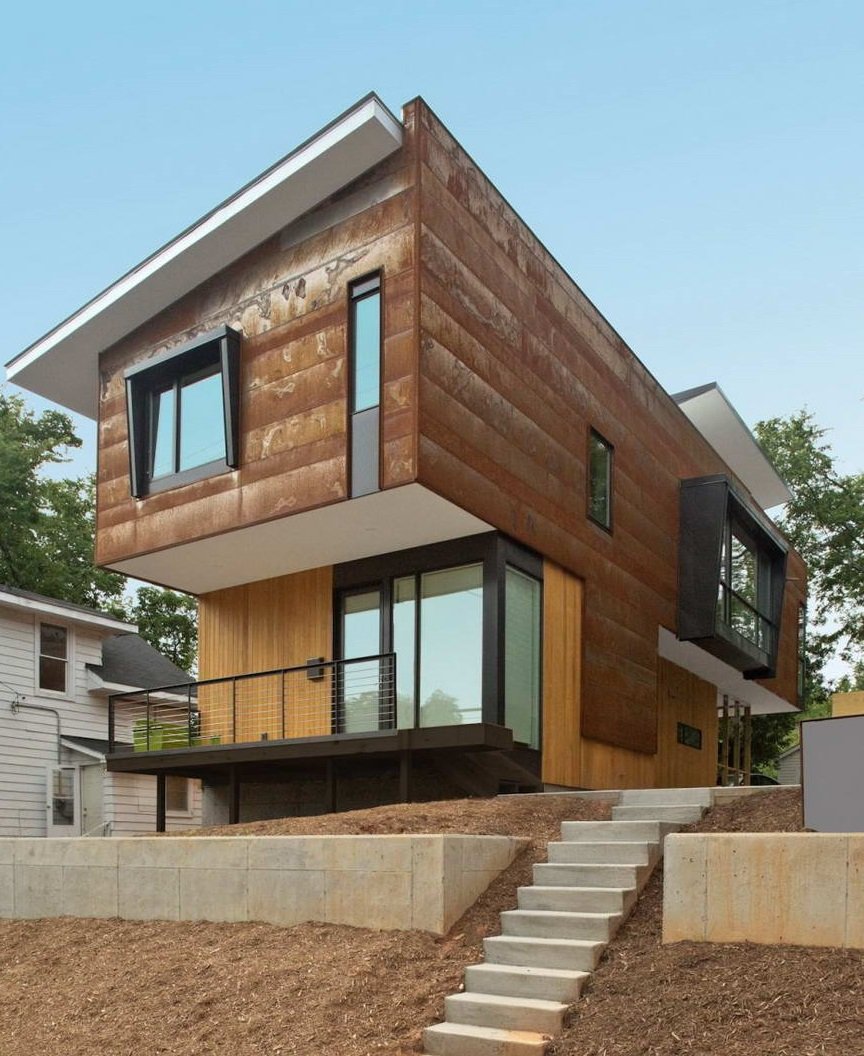#13597. Contemporary Home with Corten Steel Façade and Wooden Accents

This contemporary residence exemplifies architecture where the façade becomes the main expressive element. The building features a cubic volume with a dramatically cantilevered second floor that creates a dynamic composition. The most striking aspect of the exterior is the corten steel cladding that covers the upper level of the structure. This material, known for its characteristic rusty patina, lends the building a warm, earthy tone while simultaneously offering an industrial character.
The lower level contrasts with the upper through the insertion of natural wood elements, creating an interesting interplay of textures and materials. Large panoramic windows are seamlessly integrated into the façade, providing abundant natural light to the interior spaces. Particularly interesting is the protruding glazed black box on the side of the building — this element not only adds architectural interest but likely creates a unique spatial experience inside the home.
Terraces with minimalist metal railings extend the living space outward, while the sharp concrete steps leading to the entrance emphasize the geometric rigor of the entire composition. When designing a façade of this type, it's important to consider not just aesthetics, but also the functionality of the chosen materials, their durability, and ability to withstand local climatic conditions.
The combination of corten steel, wood, and glass in this house's façade creates a modern yet warm appearance that stands out against the more traditional surrounding development. This approach is worth noting when developing your own project — contrasting materials and protruding volumes can transform even the simplest architectural form.